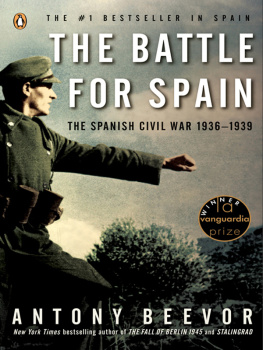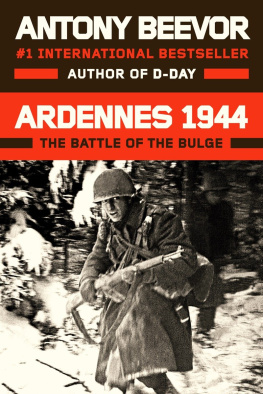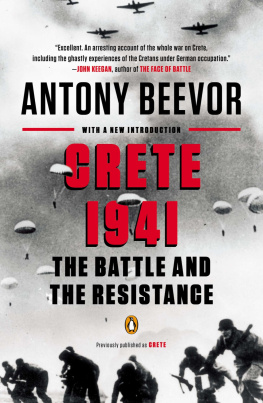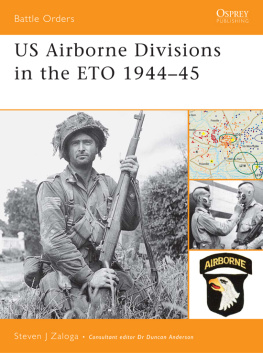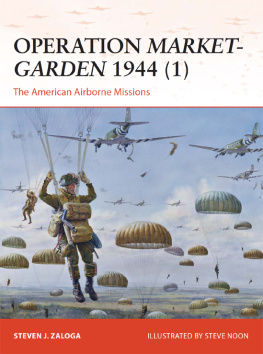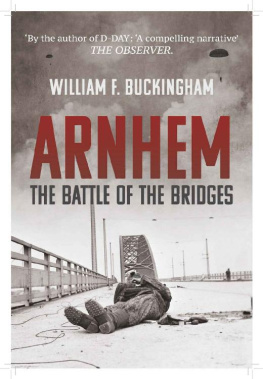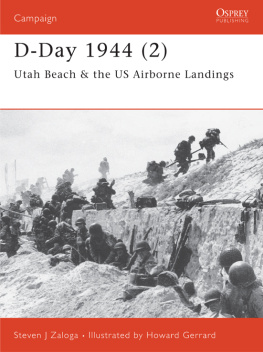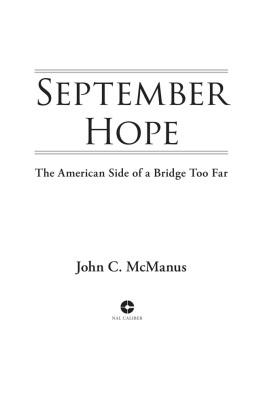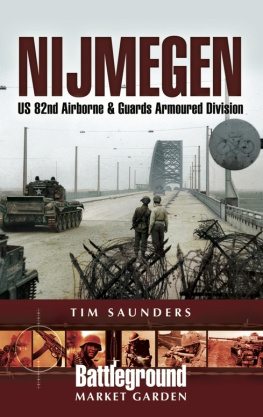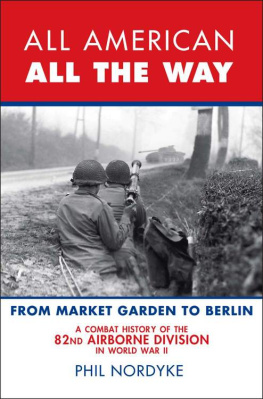ARNHEM
Antony Beevor is the author of Crete: The Battle and the Resistance (Runciman Prize), Stalingrad (Samuel Johnson Prize, Wolfson Prize for History and Hawthornden Prize), Berlin The Downfall: 1945, The Battle for Spain (Premio La Vanguardia), D-Day The Battle for Normandy (Prix Henry Malherbe and the RUSI Westminster Medal), The Second World War and Ardennes 1944 (Prix Mdicis shortlist). Acknowledged as the number one bestselling historian in Britain, Beevors books have appeared in thirty-two languages and have sold more than seven million copies. A former chairman of the Society of Authors, he has received a number of honorary doctorates. He is also a visiting professor at the University of Kent and an Honorary Fellow of Kings College London. He was knighted in 2017.
1: THE CHASE IS ON!
, wrote a staff officer, it remained a mystery why the enemy had failed to mass all his troops at one point and force a breakthrough Instead, the enemy did the German command the favour of distributing his forces in a fan-type manner over the entire front.
2: MAD TUESDAY
The Dutch word Moffen for Germans was the equivalent of Kraut or Boche in English or French. It dated from the early seventeenth century when the areas of northern Germany just east of the Netherlands were referred to as the Muffe. The much richer and more sophisticated Dutch looked down on their inhabitants as unsophisticated and crude. The term was revived during the German occupation.
Seyss-Inquarts full title of Reichskommissar fr die besetzten niederlndischen Gebiete (Reichskommissar for the occupied Netherlandish areas) reflected the earlier Nazi plan of incorporating the Netherlands into the Reich.
It has been suggested that, of all nationalities, the Dutch suffered the lowest survival rate in concentration camps because their bodies had been used to a diet of high fat content from dairy products. The sudden change to an almost total lack of fat in the camp food proved devastating.
3: THE FIRST ALLIED AIRBORNE ARMY
The First Allied Airborne Army consisted of the American XVIII Airborne Corps, with the 82nd and 101st Airborne Divisions, and the 17th Airborne Division still in training; and the British I Airborne Corps, with the 1st and 6th Airborne Divisions, the Polish 1st Independent Parachute Brigade attached and the 52nd (Lowland) Division as an airlanding formation to be flown in later to a captured airfield.
The commander in chief Northern Group of Armies, in conjunction with the Commanding General First Allied Airborne Army, will plan and direct the employment of the entire Airborne force which is made available to the Northern Group of Armies to expedite the accomplishment of its assigned missions.
it but I am damned glad it was. The political fallout in the United States would have been disastrous if an American airborne division had been chewed to pieces in a British plan.
5: THE DAY OF THE HATCHET
The explosive was from supplies dropped by SOE with the unfortunate Dutch agents captured on arrival as a result of British incompetence.
A myth arose just after the war that the plan for Market Garden had been betrayed to the Germans by a traitor in the Dutch underground called Christiaan Antonius Lindemans, known as King Kong because of his size. Lindemans, born in Rotterdam, worked in his fathers garage. During the war he helped an escape line of the Dutch underground. In March 1944, he was recruited by Major Hermann Giskes, the Abwehr counter-intelligence chief in the Netherlands. The suggestion that the whole plan had been betrayed was never convincing because all German sources admit that they were taken completely unawares. Sentenced to death by a Dutch court, Lindemans committed suicide in prison in 1946.
According to the end-of-war report by Hugh Trevor-Roper, the historian and wartime intelligence officer, SS-Brigadefhrer Walter Schellenberg, the head of the SD foreign intelligence department, received information in mid-September 1944 predicting an Allied airborne landing in Holland to seize a Rhine bridge, but he took no action in response.
10: THE BRITISH LANDINGS SUNDAY 17 SEPTEMBER
The presence in the Netherlands of Muslims from the 13th SS Division Handschar, which was then still fighting partisans in Yugoslavia, is surprising but not impossible, as they may have been attached to the XII SS Armeekorps.
12: NIGHT AND DAY ARNHEM 1718 SEPTEMBER
The headquarters of the Wehrmacht commander-in-chief Netherlands was still so obsessed about an uprising of the Dutch underground that it stated in a signal on the morning of 18 September, Arnhem road bridge occupied by terrorists.
13: ARNHEM THE SECOND LIFT MONDAY 18 SEPTEMBER
The Luftwaffe chief of staff described another Hitlerian rant that morning. The Fhrer becomes violent with rage about the failure of the Luftwaffe, wants to know immediately how many and what fighter forces are committed for the defence of Holland. My telephone call to Luftwaffe Reich revealed that only minor forces were committed. The Fhrer used my report as an excuse for the severest reprimands: the entire Luftwaffe which is incompetent and cowardly, had deserted him.
Each 24-hour ration pack contained meat cubes, concentrated oatmeal, boiled sweets, plain chocolate, cigarettes, benzedrine tablets and a powder of tea-leaves, sugar and dried milk ready-mixed for the addition of hot water.
14: THE AMERICAN DIVISIONS AND XXX CORPS MONDAY 18 SEPTEMBER
British officers believed that their veiled speech, mostly using nicknames, cricketing metaphors and schoolboy slang, was impenetrable to German listening stations. All too often this was not the case.
16: NIJMEGEN AND EINDHOVEN TUESDAY 19 SEPTEMBER
One volunteer whose services were rejected was called Jan van Hoof, a lanky boy scout. Bestebreurtje refused to use him as he was very young and seemed very nervous. Yet after the war a legend emerged in Nijmegen, promoted by a Jesuit priest, that Jan van Hoof had cut all the wires to the explosive charges on the bridge and thus saved it. This story is hard to credit. Jan van Hoof was killed very soon afterwards in the fighting, and would not have had a chance to get near to the bridge which was by then heavily guarded. And if he had cut the wires beforehand, why did he not tell Bestebreurtje, which was surely his duty in the circumstances? Once again the bridges survival came back to Models categorical order that it was not to be blown.
17: NIJMEGEN CROSSING THE WAAL WEDNESDAY 20 SEPTEMBER
once they got there, because by this time Arnhem was in German hands.
18: ARNHEM BRIDGE AND OOSTERBEEK WEDNESDAY 20 SEPTEMBER
Cain, the only winner of a Victoria Cross at Arnhem to survive the battle, was the father-in-law of Jeremy Clarkson.
19: NIJMEGEN AND HELLS HIGHWAY THURSDAY 21 SEPTEMBER
. No children were born there in the end because the place had not been finished until late 1943.
20: OOSTERBEEK THURSDAY 21 SEPTEMBER
It is worth remembering that the mortally wounded Elizabethan hero and poet warrior Sir Philip Sidney died in Arnhem from wounds received on the battlefield of Zutphen on 22 September 1586. Although hard hit, he had offered the last of his water to another casualty with the immortal words Thy necessity is greater than mine. He had been fighting alongside the Dutch against the furia espaola of the Castilian infantry.
A platoon commander in the 21st Independent Parachute Company called Gerald Lamarque wrote a successful novel about the pathfinders at Arnhem called


